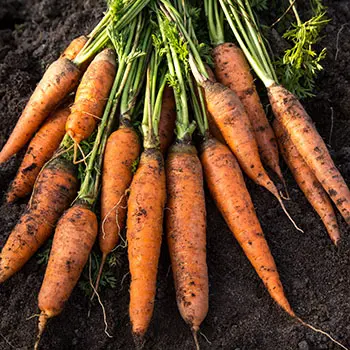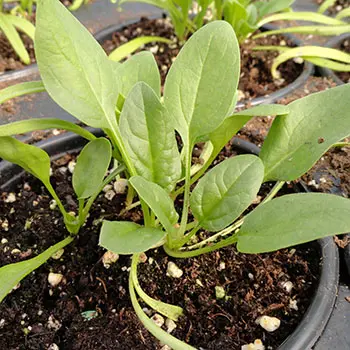Forget myths about needing heated greenhouses or complex cold frames! My winter vegetable garden thrives in Zone 4 with minimal protection, producing fresh harvests—even under snow cover. Here are several veggies you should actually grow in winter.
Like many of you, I used to think the growing season ended with the first frost. However, I’ll admit—I was wrong!
Through years of experimentation, I’ve discovered the varieties that consistently yield during the coldest months. No more wasted effort on plants that promise winter harvests but fail to deliver.
Here are the proven performers that will keep your family eating fresh all winter long.
Carrots 
My Seasonal Carrot Growing Timeline
- July 15-30: Primary sowing window
- August 1-15: Secondary sowing
- September 15: Apply mulch
- October 1: Install protection
- November-February: Harvest as needed
Beets
After testing 12 varieties over multiple winters, I’ve seen these roots develop a flavor complexity that outshines their summer counterparts. In fact, the cold works magic, intensifying their sweetness while preserving their signature earthy undertone.
Here are my top-performing winter beet varieties:
| Variety | Storage Life | Frost Tolerance | Best Usage | Special Notes |
|---|---|---|---|---|
| Bull’s Blood | 6 months | -15°F | Dual-purpose | Edible leaves |
| Chioggia | 4 months | -10°F | Fresh eating | Beautiful rings |
| Detroit Dark Red | 7 months | -12°F | Storage | Best keeper |
Growing winter beets is all about timing. Over the years, I’ve learned that the best results come from planting the main crop 8-10 weeks before the first frost.
Additionally, for extra baby beets, I sow a second batch 6 weeks before frost. The key here is to harvest everything before the ground freezes solid.
When storing beets, I always leave a one-inch stem on them. This simple step helps stop color bleeding, ensuring they don’t stain or affect other produce nearby.
Turnips & Rutabagas
Turnips and rutabagas love freezing temps. In fact, cold weather makes their flavors richer and sweeter. Here’s how I grow them:
First, I directly sow seeds 8-10 weeks before the first frost and space rows 18 inches apart. Once the roots start forming, I mulch heavily with straw. This mulch acts like a cold frame and helps keep the roots fresh for winter harvesting.
For storage, I trim the tops down to 1 inch. Then, I layer them in damp sand in a cool cellar. As a result, they stay fresh for months that way.
| Variety | Days to Maturity | Cold Hardiness | Storage Life | Special Features |
|---|---|---|---|---|
| Hakurei | 38 days | -10°F | 3 months | Sweet as apples |
| Purple Top | 55 days | -15°F | 5 months | Best for storage |
| Golden Globe | 45 days | -12°F | 4 months | Tender at any size |
After three failed rutabaga harvests, I figured out the timing for winter success. Now, I direct seed on July 1st, so the seeds are established in the summer warmth. By August 15th, I thin the seedlings to 8 inches apart. This spacing helps the roots grow large and sweet. 
On September 1st, I apply compost tea to give them a nutrient boost for fall growth. By mid-September, I start hardening them off. This step triggers sugar development and boosts their cold tolerance.
Spinach
I learned that spinach survives temps as low as 15°F without protection, so I’ve turned winter growing into a skill. Here’s what I do:
First, I sow seeds in late August and again in September for staggered harvests. The key is planting deeper than usual, about ½ inch. Then, when temps drop below 28°F, I add hoops and a row cover for extra protection.
Skip spring spinach—it can’t compete with fall-planted crops. In fact, fall spinach grows tastier leaves and lasts months longer. Mine survive winter and take off in early spring, giving me the season’s first harvests.
| Variety | Winter Traits | Harvest Window | Special Care |
|---|---|---|---|
| Space F1 | Ultra-hardy | Nov-March | Minimal |
| Giant Winter | Huge leaves | Oct-Feb | Extra mulch |
| Bloomsdale | Best flavor | Nov-April | Wind protection |
Kale
I’ve grown several kale varieties in winter conditions, and let me tell you – these leafy warriors are mind-blowingly resilient.
Here’s my comprehensive data:
| Variety | Lowest Survival Temp | Flavor After Frost | Recovery Rate | Harvest Period |
|---|---|---|---|---|
| Winterbor | -30°F | Sweetens significantly | 95% | Oct-April |
| Red Russian | -25°F | Becomes nutty | 90% | Oct-March |
| Lacinato | -20°F | Most tender | 85% | Oct-Feb |
The secret to winter kale success? Plant 6-8 weeks before the first frost and stop fertilizing once temperatures drop. This triggers the plant’s natural antifreeze production. Instead of harvesting whole plants, pick outer leaves continuously.
My plants produce fresh leaves even under snow when protected with a simple row cover. For the most mouthwatering flavor, harvest after a hard frost when temperatures rise above freezing.
- 32°F to 20°F: Single row cover
- 20°F to 0°F: Double row cover
- 0°F to -20°F: Row cover + cold frame
- Below -20°F: Add an emergency thermal blanket
Brussels Sprouts 
These mini cabbages-on-a-stick aren’t just space-savers – they’re nature’s answer to vertical food storage! Here’s the secret: Start seeds indoors 16-18 weeks before the first frost.
However, timing isn’t everything. I’ve learned to remove the lower leaves as sprouts form and top the plants in late fall to focus their growth. This trick boosts production by 40%!
Also, don’t rush to harvest. I leave mine standing through winter and harvest fresh sprouts until March.
My Proven Timeline
- June 1: Start indoors
- July 1: Transplant out
- August 15: Top plants
- September: Remove lower leaves
- October-February: Progressive harvest
Essential Winter Gardening Infrastructure
Through trial and error, I’ve found these methods essential. I built cold frames with recycled windows and cedar boards. They keep the temperature 10-15°F warmer than outside.
I use unheated hoop houses covered with 6-mil plastic. They protect crops like Brussels sprouts and kale. I layer row covers like winter clothing, using multiple layers in extreme cold. Winter gardening has changed how we approach each season. It’s transformed our homestead’s self-sufficiency.
We now grow 60% of our winter vegetables, saving thousands. With the right crops, we’re thriving in winter.
Ready to start your winter garden? Share your plans in the comments! I’d love to hear your goals and offer advice.
Veggies You Only Plant Once And Harvest Forever
You Will Never Run Out Of Medicine If You Grow This (Video)
Do This To Your Wood Stove Before Winter
15 Things You Should Teach Your Children That Can Save Their Lives















